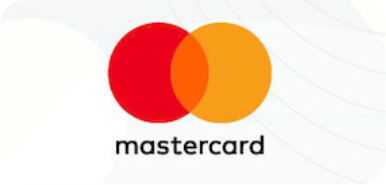Volatility indices play a major role in financial markets, helping traders assess market uncertainty and risk. Among the most well-known volatility indices are the VIX (CBOE Volatility Index) and Deriv’s Volatility Index. While both serve as measures of volatility, they have key differences that traders should understand before using them for market analysis or trading strategies.
What is the VIX (CBOE Volatility Index)?
The VIX, often referred to as the “fear index,” is a real-time market index that represents the market’s expectations of volatility over the next 30 days. It is derived from the S&P 500 Index options and is widely used by institutional and retail traders to gauge investor sentiment and future market movements.
Features of the VIX
Some of the key features of VIX includes:
- Measures expected volatility based on S&P 500 options pricing.
- Used as a benchmark for market uncertainty.
- Higher VIX values indicate increased market fear and instability.
- Lower VIX values suggest market stability and lower risk.
What is Deriv’s Volatility Index?
Deriv, a popular online trading platform, offers its own set of volatility indices that simulate real-world market movements but are not based on actual stock market data. These indices, often called synthetic indices, are designed for 24/7 trading and provide an alternative to traditional financial instruments.
Features of Deriv’s Volatility Index
Deriv VIX also has some major characteristics that makes it outstanding. They are:
- Simulated market conditions not influenced by economic events or news.
- Available 24/7, unlike traditional stock indices.
- Includes different volatility levels, such as Volatility 10, 25, 50, 75, and 100.
- Provides consistent market movement, ideal for backtesting trading strategies.
Differences Between VIX and Deriv’s Volatility Index
While both indices measure market volatility, their core differences are significant:
| Feature | VIX | Deriv’s Volatility Index |
| Based on | S&P 500 options | Simulated market movements |
| Trading Hours | Limited to market hours | 24/7 availability |
| Real-world impact | Influenced by economic events | Independent of economic factors |
| Regulation | Regulated by CBOE | Operated by Deriv |
Trading Strategies for VIX vs. Deriv’s Volatility Index
Traders use different strategies based on the nature of these indices.
Trading Strategies for VIX
- Options Trading: Traders use call and put options to speculate on VIX movements. Since the VIX spikes during market uncertainty, traders often buy VIX calls when expecting volatility.
- Futures Trading: VIX futures allow traders to hedge against market downturns. If the stock market is expected to crash, traders go long on VIX futures.
- Mean Reversion Strategy: Since the VIX tends to revert to its long-term average, traders can short the VIX when volatility spikes and expect it to decline over time.
Trading Strategies for Deriv’s Volatility Index
- Trend Following: Since Deriv’s indices maintain steady volatility, traders use moving averages and momentum indicators to catch trends.
- Martingale Strategy: Some traders on Deriv use the Martingale betting system, doubling their trade size after losses to recover. However, this approach carries risks.
- Range Trading: Traders analyze support and resistance levels to profit from price fluctuations within a defined range.
How to Use VIX in Trading
- Traders use the VIX to hedge portfolios and predict future market volatility.
- A rising VIX suggests increased risk, leading to potential market downturns.
- Options traders rely on the VIX to gauge implied volatility for pricing strategies.
How to Use Deriv’s Volatility Index
- Traders use it to test strategies without external market influences.
- Scalpers benefit from the consistent price action available 24/7.
- It provides an alternative for those looking to trade synthetic assets rather than real-world financial instruments.
The Role of Volatility Indices in Risk Management
Both the VIX and Deriv’s Volatility Index play crucial roles in risk management, helping traders and investors make informed decisions based on market uncertainty.
1. Hedging Against Market Volatility
- VIX as a Hedge: Investors use the VIX to protect portfolios against sudden market downturns. Since the VIX typically rises when stock markets decline, traders buy VIX futures or options as insurance against falling asset prices.
- Deriv’s Volatility Index as a Risk-Managed Asset: Unlike the VIX, Deriv’s indices are not tied to actual stock markets but still allow traders to hedge against price swings in a controlled, synthetic environment.
2. Portfolio Diversification
- Using VIX for Diversification: Traders can use the VIX as an inverse correlation tool—when stocks fall, the VIX rises, allowing traders to offset risks in their portfolios.
- Using Deriv’s Volatility Index for Strategy Testing: Deriv’s indices provide a fixed volatility environment, enabling traders to test strategies without external market influences.
3. Managing Risk Exposure
- Stop-Loss and Take-Profit Levels: Both indices require careful risk management. Traders must set stop-loss levels to prevent excessive losses and take-profit levels to secure gains.
- Position Sizing: Whether trading VIX futures or Deriv’s synthetic indices, position sizing is crucial. Over-leveraging can lead to rapid losses in volatile conditions.
Conclusion
In conclusion, Understanding the differences between the VIX and Deriv’s Volatility Index is crucial for traders looking to incorporate volatility indices into their strategies. The VIX is a market-driven index reflecting real-world investor sentiment, while Deriv’s Volatility Index provides a simulated market environment ideal for continuous trading.
Depending on your trading goals, you may choose one or use both strategically.
Frequently Asked Questions
Is Deriv’s Volatility Index the same as the VIX?
- No, Deriv’s Volatility Index is a synthetic index that operates independently from real-world market data, whereas the VIX measures market expectations of future volatility based on the S&P 500.
Can I use the VIX to predict stock market movements?
- Yes, traders often use the VIX as a market sentiment indicator. A rising VIX suggests increased fear and potential downturns, while a falling VIX indicates market stability.
Why is Deriv’s Volatility Index popular among traders?
- Deriv’s Volatility Index provides 24/7 trading opportunities with predictable market behavior, making it ideal for traders who want to test strategies without external economic influences.
Is trading Deriv’s Volatility Index risky?
- Like any trading instrument, Deriv’s Volatility Index carries risk. However, its structured movement allows traders to develop and test strategies under controlled conditions.
How can I start trading volatility indices?
- To trade the VIX, you need access to derivatives like VIX futures or options. To trade Deriv’s Volatility Index, you can sign up on Deriv, practice on a demo account, and explore different volatility levels.










